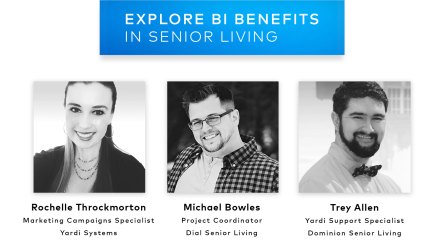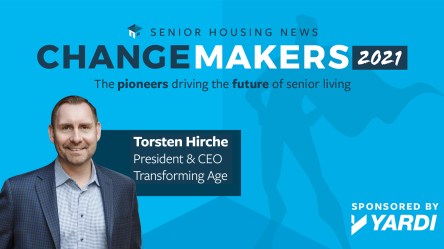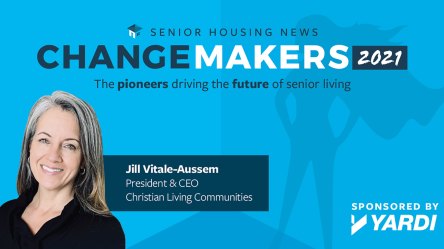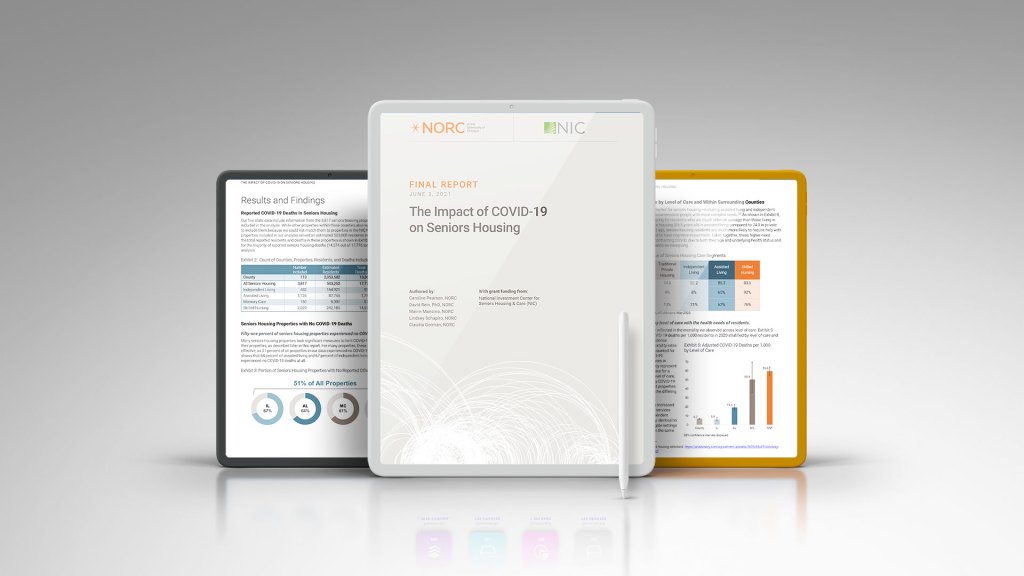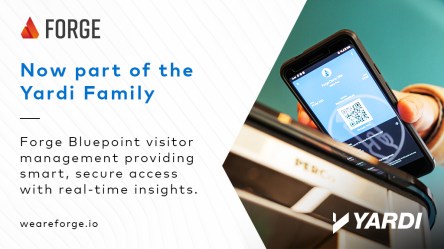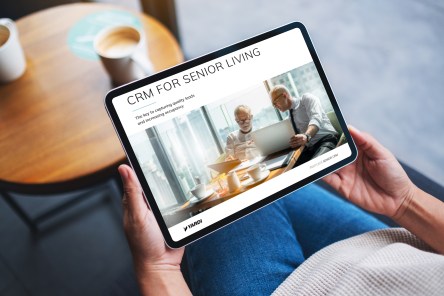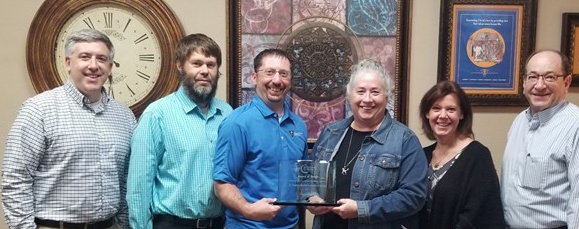Even as pandemic-driven lockdowns and stay-at-home mandates curtailed energy consumption in 2020, organizations in all types of industries remained focused on impactful conservation initiatives. Here’s a look at some of the companies that joined Yardi in receiving a 2021 ENERGY STAR® Partner of the Year Sustained Excellence Award, the highest honor bestowed by the U.S. Environmental Protection Agency and the U.S. Department of Energy for initiatives that reduce energy consumption and mitigate climate change. BENTALLGREENOAK. Along with achieving ENERGY STAR certification for 81 properties, the Seattle-based global real estate investor continued benchmarking its assets’ sustainability performance against internal best practices and peers. BentallGreenOak also used ENERGY STAR metrics to measure the success of its energy efficiency strategies. FOOD LION INC. The Salisbury, N.C.-based retail grocery store chain expanded its LED lighting retrofit program to 32 stores, saving more than 9.2 billion BTUs annually. It also earned ENERGY STAR certification for 919 stores, which encompass 89% of its portfolio. HEXION INC. The Columbus, Ohio, producer of thermosetting resins, coatings, adhesives and specialty resins executed 52 energy projects that produced $2 million in savings. It also conducted treasure hunts at 23 sites that identified 131 potential projects. The Columbus, Ohio, company’s energy management program has reduced energy intensity by 28% and saved $14 million in costs since 2014. INTERTAPE POLYMERGROUP INC. The Sarasota, Fla., manufacturer of paper and packaging products achieved a 6.8% reduction in energy intensity over 2019, part of energy savings equivalent to $6.4 million since 2009. The company also participated in several ENERGY STAR certification, Challenge for Industry and Find the Treasure activities. MERCK & CO. INC. The pharmaceutical and healthcare company issued a letter of intent to purchase 60 MW of solar energy, matching the amount purchased in 2019. The Kenilworth, N.J.-based...
BI for Senior Living
Webinar Recap
What are the benefits of business intelligence in senior living? How can providers, investors and other leaders choose the right BI solution? These questions were answered in a recent webinar with Yardi and McKnight’s Senior Living — Differentiators in Business Intelligence Technology. The June webinar gathered Yardi clients Trey Allen of Dominion Senior Living and Michael Bowles of Dial Senior Living, with discussions led by Yardi Marketing Campaigns Specialist Rochelle Throckmorton. The panel also featured Yardi Associate Technical Account Manager Chris Golden. The panel started with an in-depth look at business intelligence, moving into the tools and tips needed to select an effective BI solution. Attendees then heard insights from Allen and Bowles, who explained the challenges their communities faced before adopting BI tools. They continued by sharing their firsthand experience implementing Yardi Senior IQ — a single connected BI solution — describing how it’s transformed their operations for the better. Here’s a highlight: Throckmorton: How does Senior IQ help you and your team? Allen: Yardi Senior IQ has been very helpful to our team here at Dominion Senior Living, mainly in the way of convenience. A lot of business intelligence information can be arranged on a single screen — from community management information to marketing or EHR — and the financial information, too. We no longer have to pull 8 different reports. Rent roll, trial balance, trend activity and incident reports — it can all be arranged on one dashboard. Plus it has graphs, tables and comparisons. It’s very helpful and expedient. Throckmorton: How much time is saved when using business intelligence tools? Allen: The time saving is in the convenience. Our community management and financial team members were having to run 8 different reports each month, all to see the same...
Changemakers Series
Recognizes Torsten Hirche
How can you transform the senior housing sector? For Torsten Hirche, president and CEO of Transforming Age, it’s accomplished by forming new partnerships, offering diverse services and building quality communities. Given his creative approach to senior living, Torsten has been recognized as a 2021 Changemaker through the Yardi-sponsored interview series with Senior Housing News (SHN). In leading Transforming Age, a Seattle-based organization that now serves 55 communities, Torsten has learned the ins and outs of leadership, strategy and more. In his Changemaker interview, Torsten explains how he navigates the social, technological and economic changes facing the industry. He also gives an inside look at how he’s helping Transforming Age stay ahead of the curve. Check out this excerpt: What are one or two of the changes that you are most proud of leading at Transforming Age or in the senior living industry at large? First and foremost is the team. It’s been a hell of a ride and the team has stretched, grown, risen to the task and always showed up. I’m proud of them. That includes both legacy team members and the team members we’ve added. The people we serve have gone through a lot of changes with us. Open communication played a major role in our success there. Change is hard for the people we serve, especially when it occurs at high velocity. The repositioning of Parkshore is a change I am proud of. Parkshore is one of our flagship communities, but it was a diamond in the rough. It needed a lot of attention and the residents were extremely accommodating, even at the rapid pace we were moving. We communicated, created a dialogue together and walked through the changes so everyone was on the same page. Our governance model also underwent...
Single Connected Solution
Senior Living Benefits
As COVID-19 continues to affect senior living communities, providers are challenged with finding solutions to meet the needs of residents, families and staff. Mainly, the pandemic’s restrictions on normal operations leave senior living providers in need of new systems and strategies. So which solutions are important, now more than ever? For senior living providers and other healthcare leaders, implementing a software solution may have the greatest impact. According to Ziegler’s research, the pandemic is one factor that’s accelerated the adoption of tech-enabled solutions across the healthcare industry — like never before. The research reveals the considerable benefits of utilizing software tools as the world changes. With that, incorporating an effective software solution is key for senior living providers in streamlining operations, increasing resident satisfaction, delivering quality care and the list goes on. Choosing a single connected solution Not just any software solution is beneficial. To meet the needs of their communities — especially as the pandemic shifts — providers need a full suite of tools that are mobile, intuitive and efficient. Ziegler’s white paper notes the importance of choosing a single connected solution to stay ahead of the curve. Describing the ever-changing effects of COVID-19 and other factors, they explain that “providers need a full suite of patient access solutions and virtual care functionality, as well as further tech-enabled automation of workflows.” For senior living operators, this means having tech-enabled tools in place to benefit residents, families, care staff and leaders — tools that unite on a single platform. That’s where the Yardi Senior Living Suite comes in. As a single connected solution that eliminates the gap between senior living property management and clinical services, the Senior Living Suite gives providers everything they need to manage their communities. The key differentiator? The union of property management, finance, marketing, business intelligence and resident care on a single platform. At a glance, here are 5 ways the Senior Living Suite can make a difference: Combine property management, finance and business oversight for improved efficiency, reduced costs and responsive resident services with a comprehensive management tool, Yardi Voyager Senior HousingKeep residents and families connected through a secure online portal, RentCafe Senior LivingMake smarter, faster decisions with actionable information for your entire portfolio through Senior IQ, a business intelligence solution for senior livingKeep health records error free, limit liability and empower staff to deliver the best resident care with Yardi EHR, a full-service electronic health record solution Attract new residents, nurture your leads and increase resident retention with RentCafe Senior CRM, a mobile-friendly sales and marketing solution Ultimately, there’s no denying the importance of software solutions for businesses — especially those that provide interconnected tools. This holds true for the senior living industry, both through the pandemic and beyond. Still curious about how a single connected solution can transform your business and care services? Explore the Yardi Senior Living Suite and watch this video to learn...
Changemakers Series
Jill Vitale-Aussem
Ready to meet another Changemaker — a one-of-a-kind leader in senior living? Through the 2021 Changemakers series, a collaboration between Yardi and Senior Housing News (SHN), senior living leaders are recognized for their ability to invoke change and create success. With their insights captured through detailed interviews — released in batches — you gain a front row seat to hear their stories and advice. Introducing Jill Vitale-Aussem We’re excited to present another Changemaker, Jill Vitale-Aussem. In addition to being president and CEO of Christian Living Communities (CLC), Jill is the author of “Disrupting the Status Quo of Senior Living.” Talk about being an expert on driving change in the industry. From her previous work to now leading CLC, a Colorado-based organization serving over 3,000 seniors, Jill has learned to push through challenges, think outside the box and implement new strategies. In this excerpt from the SHN interview, Jill reveals the steps she’s taking to lead CLC toward a bright future. She also sheds light on her core philosophy — to recognize senior living residents as citizens who can, and should, actively contribute to creating vibrant communities. Describe a change or changes that you’ve led throughout your career in senior living, that you’re most proud of. When I started with CLC back in 2009, it was in the early stages of a huge campus redevelopment project. The community had been there for more than 30 years, and it was time to breathe life into the birthplace of the organization. The goal of this redevelopment was to bring the community together and add life plan apartment homes to the campus. This project brought together people of different socioeconomic backgrounds to create a sense of oneness and community. We also developed a resident leadership group to...
Public Transit
On the Move Again
What does the future hold for public transit – bus, light rail and subway – after the pandemic’s disruptions? Nationally, public transit ridership dropped by nearly 80% in April 2020 and remained more than 60% below 2019 levels through the rest of the year, with systems in San Francisco, Washington, D.C., Boston, Chicago, New York City, Seattle and Atlanta all losing more than half their ridership. “The fallout for public systems like transit has been nothing less than monumental,” says Government Technology, which covers information technology’s role in state and local governments. Public transit filled a vital need as COVID-19 raged, delivering workers to essential jobs at hospitals, pharmacies, grocery stores, fire and police stations and utility companies, and transporting medical patients, medicines, meals and critical supplies. Crews stepped up efforts to clean, disinfect and ventilate vehicles and facilities. Some agencies adopted new technology to better monitor system use during the pandemic and be more responsive to changing needs afterward. More recently, an infusion of federal emergency assistance has helped stabilize transit organization finances. Proposed infrastructure legislation includes several measures to expand bus routes and rail lines and convert gas and diesel vehicles to zero-emission electric vehicles. As of May, about 50% of transit riders nationwide had returned compared to pre-pandemic times, according to the American Public Transportation Assn. Roads & Bridges, a trade publication for the transportation construction and maintenance marketplace, notes that the pandemic “has elevated public awareness and appreciation for the vital role transit plays in our communities.” New challenges arise But even as the pandemic wanes in some regions, new challenges arise for public transit, which less than 6% of Americans used to commute to work before the pandemic. Work-from-home arrangements appear to be a durable trend with little or...
Senior Living News
Alzheimer's Treatment
On June 7 of this year, the U.S. Food & Drug Administration (FDA) approved the first novel therapy for Alzheimer’s disease in nearly two decades. With over 6 million Americans currently living with the disease, the approval certainly made history. Alzheimer’s today As a disease that decelerates memory and cognitive function over time, Alzheimer’s — a devastating form of dementia — has become the sixth leading cause of death in the United States. And with the disease primarily effecting older adults, including roughly 42% of assisted living residents in the U.S., the topic of treatment has long been relevant in the senior living industry. “The need for treatment is urgent,” said Patrizia Cavazzoni, M.D., director of the FDA Center for Drug Evaluation and Research. FDA approves novel therapy What exactly is the latest treatment for Alzheimer’s, and what does the approval mean? As the decision generated significant attention, the FDA announcement aimed to answer such questions. Let’s take a look: The therapy, Aduhelm (aducanumab), has been authorized to treat patients with Alzheimer’s disease using the accelerated approval pathway. Under this, the FDA approves a drug for a serious or life-threatening illness — if it may provide meaningful therapeutic benefit over existing treatments. While the treatment doesn’t cure or reverse Alzheimer’s disease, the FDA announcement emphasized that “the approval is significant in many ways.” To name a few: Aduhelm is the first novel therapy approved for Alzheimer’s since 2003It’s the first treatment directed at the underlying pathophysiology of the disease, which is the presence of amyloid beta plaques in the brainThe clinical trials were the first to show that a reduction in plaques is expected to reduce the clinical decline of Alzheimer’s For some, these findings were seen as a positive breakthrough. For others,...
Senior Living Positivity
Amidst COVID-19
The COVID-19 pandemic has been a challenging time for all of us. And for those in senior living communities, it’s been especially difficult. Despite the struggles and devastation, we’ve seen tokens of positivity, endurance and strength in the last year. Most recently, a new study by NORC at the University of Chicago revealed something remarkable: 51% of senior living communities experienced no COVID-19 deaths in 2020. We hope that the content below sheds light on this revelation, brings feelings of optimism and of course — highlights the resilience of seniors and their families. Positivity shines through in senior living Funded by the National Investment Center for Seniors Housing & Care (NIC), the NORC study examined the impact of COVID-19 on senior living communities. Examining mortality rates by property type, NIC aimed to understand how the pandemic impacted different care settings, while showing that seniors housing provides safe environments for older adults. Fortunately, the NORC study revealed quite a few positive findings. Relayed by Senior Housing News and McKnight’s Senior Living, here’s an overview of what NORC found: 51% percent of seniors housing properties studied experienced no COVID-19 deaths in 2020Roughly two-thirds of independent living (67%), assisted living (64%) and memory care (61%) communities had no COVID-19 deaths39% of skilled nursing facilities experienced no deathsThe COVID-19 mortality rate in independent living communities was comparable to that of their respective counties — suggesting that residents who live in these properties were not at higher risk by virtue of their care settingThe mortality rates in memory care and skilled nursing were higher than in other levels of care, and they were statistically equivalent to each otherSeniors housing properties continued to operate and care for their residents, while facing a range of evolving circumstances “While COVID-19 has been devastating for older adults, a majority of properties avoided any resident deaths,” said Caroline Pearson, senior vice president of healthcare strategy and lead researcher at NORC. We hope that you’ll explore the NORC study, The Impact of COVID-19 on Seniors Housing, to learn more. We’re empowered by NORC’s research and pleased to recognize the strength of older adults and their families, as well as senior living communities’ commitment to care throughout the pandemic. Check out the Yardi blog for more positive stories in senior living during...
Creating Solutions
Affordable Housing Recovery
The past year illuminated shortcomings that can no longer be ignored within the affordable housing industry. “The United States needs more than 7 million additional affordable housing units to meet the current demand. Yet the housing gap continues to widen, due to the triple-whammy of all-time high levels of unemployment, a severe lack of housing and a global pandemic,” explained executive vice president of Merchants Capital Chicago, Lee Oller. In a discussion with Multi-Housing News she continued, “We must collectively work to solve this crisis before COVID-19 adds the housing market to its growing list of victims.” As the nation approaches recovery, builders and developers tackle projects that were queued due to shutdowns, labor and supply shortages. Until supply catches up with demand, affordable housing providers can benefit from greater efficiency around the office to ease strain on staff and residents. How to achieve a more efficient leasing process One way to alleviate the burden on staff and residents is to expedite and streamline the application process. Software that combines compliance data management and leasing can simplify both processes. Select a compliance data management platform that processes applications for multiple affordable programs such as Low-Income Housing Tax Credit (LIHTC), HOME, rural development, HUD (50059) and local programs. Staff can save time if the platform also accommodates popular forms including waitlists, move-ins, annual recertifications, interim and market rate applications for combination properties. Next, streamline the workflow for front end and backend users. Applicants benefit from online leasing with a simple workflow: intuitive data collection uses applicants’ answers to provide relevant follow-up questions. Applicants use the same program to upload required documentation and submit fees. Where permitted, applicants may submit electronic signatures for a completely digital experience—no leasing office appointments or data entry necessary for office staff....
How High
Can Buildings Go?
In the early 1930s, the title of world’s tallest building was claimed three times in rapid succession – by the Bank of Manhattan, the Chrysler Building and the Empire State Building, all in New York City. Since then, the designation has changed hands many times, with Burj Khalifa in Dubai, United Arab Emirates, the current champion at 2,717 feet, followed by the 2,073-foot-tall Shanghai Tower and the Makkah Royal Clock Tower in Mecca, Saudi Arabia, which tops out at 1,971 feet. The tallest building from 2004 to 2010 – Taipei 101 in Taiwan, which Burj Khalifa usurped – now occupies the No. 10 spot. The Willis (formerly Sears) Tower in Chicago reigned for 24 years until 1998 and now sits at No. 22. And Bank of Manhattan, now known as 40 Wall Street, doesn’t even crack New York’s top 20. Although construction declined in 2020, the year still saw 106 completions of buildings 656 feet and taller, including the 1,500-foot-plus Central Park Tower and 1,400-footer One Vanderbilt, both in New York. Industry observers predict that up to 150 buildings 656 feet or taller will be completed in 2021, with between 14 and 30 being at least 984 feet tall. Will it stop? Won’t physics impose limits to the upward trend? Structural engineer William Baker doesn’t think so. The buttressed core design used for Burj Khalifa could allow structures to “conceivably go higher than the highest mountain, as long as you kept spreading a wider and wider base.” In fact, he says, “We could easily do a kilometer. We could easily do a mile. We could do at least a mile and probably quite a bit more.” The next generation of behemoths includes the partially constructed Jeddah Tower in Saudi Arabia, designed to reach 3,281...
Yardi Acquires Forge
Tech access solutions
Yardi has announced the acquisition of We Are Forge Ltd (Forge), a Bristol, UK based software company that specializes in visitor management and smart access control for real estate assets including, office, retail, industrial, flexible workspace and the education sector. Founded in 2013, Forge is based in Bristol, UK. Forge designs and develops software that connects people and buildings. Forge Bluepoint Visitor Management, is currently used across 22 million sq ft of property in the UK by high profile companies including Landsec, HB Reavis, John Lewis and Partners, CBRE and Savills. The company’s Forge Bluepoint product is a cloud-based visitor management solution that connects to access control for many of London’s premier office buildings and allows companies to manage visitors flexibly and securely. From arrival and contactless smart access, Forge Bluepoint also integrates with other building technology such as meeting room access, lifts and car parking. “We are delighted to become part of the Yardi family. Working together, we will ensure Forge Bluepoint is the leading visitor management solution across the sectors we work in,” said Paul Speariett, co-founder and director of Forge. “This is an exciting phase for Forge and our team and we are greatly looking forward to the future and being part of Yardi’s end-to-end technology offering.” “We are excited to welcome the whole team at Forge to the Yardi family,” said Neal Gemassmer, vice president of international for Yardi. “This further demonstrates our commitment to invest in innovative teams and technology to better serve the industry.” To learn more, please visit:...
Building Age-Friendly Environments...
California for Seniors
How can states build an age-friendly environment for seniors? For California, the roadmap is outlined in a Master Plan for Aging — which received a significant revision this May in light of the pandemic. California’s Master Plan for Aging Did you know that California’s over-60 population is projected to grow faster than any other age group in the next 9 years? Looking at the numbers, 10.8 million Californians will be older adults by 2030 — meaning seniors will make up one quarter of the state’s population. Crafted in response and released in January of this year, California’s Master Plan for Aging works to prioritize the health and well-being of older adults. The plan is a blueprint for the state’s communities to create environments where people of all ages and abilities are engaged, valued and afforded opportunities. With 5 bold goals and 23 intricate strategies, the plan aims to build a California for all ages by 2030. The plan’s latest revision and pandemic response Given the devastating losses and serious risks faced by older adults during COVID-19, the Master Plan for Aging underwent an urgent revision in May 2021. The new-and-improved plan seeks to address pressing needs for pandemic recovery — all while investing in the resilience of California’s seniors. The revision includes $3.8 billion in new funding with goals centered around housing, health, isolation prevention, caregiving and affordable aging. Here’s a breakdown of what the budget increase covers: Workforce development investments to help support aging healthcareA comprehensive approach to Alzheimer’s disease, with funding dedicated to public awareness, care standards and geriatric workforce developmentFunding for the Department of Social Services to preserve and expand housing for low-income seniors, ensuring housing stability in the tail-end of the pandemic Looking to learn more? Explore the Master...
Memorial Day Remembrance
In senior living
Memorial Day marks an important time to remember — and honor — those who gave their lives while serving our country. And for a collection of senior living communities, the day was spent doing just that. From recognizing their own resident veterans to honoring all military personnel who died in service, see how these Yardi clients got creative this year: Commonwealth Senior Living For Commonwealth Senior Living at Charlottesville, Memorial Day was spent singing “The Star-Spangled Banner,” reciting “The Pledge of Allegiance” and exchanging speeches. During this special ceremony, Commonwealth paid tribute to our nation’s fallen heroes. They also recognized their own resident veterans, including those who have passed on. “Thank you to American Legion Post 74’s Color Guard for presenting the colors and speaking about what the day means to you,” wrote Commonwealth on LinkedIn, sharing an article from NBC29. Westmont Living Westmont Living embraced the holiday at two of their communities, joining residents together for a day of remembrance. At Lakeview Senior Living, one of Westmont’s Oregon communities, residents unveiled an admirable Wall of Honor and reflected over music, drinks and barbeque. At Westmont of Fresno, residents gathered for a day of patriotic karaoke. The organization shared photos from Lakeview’s celebration as well as Westmont of Fresno’s gathering on LinkedIn. Pacifica Senior Living Last but not least, Pacifica Senior Living Hillsborough brought residents together for a memorable ceremony — releasing balloons in honor of their own family members. Pacifica posted an array of photos from the unforgettable day on social media. Yardi applauds our clients in senior living for finding inspiring ways to honor our country’s fallen heroes. We join them in remembering all who gave their lives in...
Fashion Retailers
Fit for a Rebound?
Stay-at-home orders, occupancy limitations and business closure orders during the pandemic took a big toll on fashion merchants. Renowned retail brands such as Neiman Marcus Group, J. Crew Group Inc., Brooks Brothers, Ascena Retail Group (operator of Ann Taylor, Lane Bryant and others) all filed for bankruptcy protection last year as sales plummeted 86% in the first months of the pandemic. Others, like LVMH Moët Hennessy Louis Vuitton, Macy’s, H&M and Burberry, closed outlets or trimmed payroll amid drastic sales slumps. The Washington Post reported in April that nearly 200 U.S. department stores have disappeared in the past year alone, with another 800, about half the country’s remaining mall-based locations, potentially being shuttered by the end of 2025. While U.S. consumers shelled out $192 billion more for online purchases in 2020 than they did a year earlier, online clothing sales rose far less than did food and beverages, consumer electronics, personal care and home furnishings. In February, U.S. spending at clothing and accessories stores was down 11% from a year earlier, according to the Commerce Department; overall retail sales grew 6.3% in that period. Purchasing perks up One reason for depressed store sales, of course, is e-commerce. Mark Cohen, director of retail studies at Columbia Business School and former chief executive of Sears Canada, notes, “The customer who used to be handcuffed to their local department store is no longer tethered because they have an online alternative that’s become even more attractive in the last year.” But things could be looking up for retail. The U.S. Commerce Department reported that overall retail spending rebounded sharply in March, rising 9.8% after the dip in February. Department store sales rose 13% from a month earlier, boosted by stimulus checks and pent-up demand. “What we’re seeing emerging...
Sound Bites
Keeping Healthy Food Habits
Few effects of the pandemic were felt as immediately or universally as food consumption. Barren supermarket shelves, higher prices and social distancing edicts forced many consumers to develop new patterns for obtaining and preparing food. According to results from a Consumer Reports survey published in January, about 80% of Americans made at least one change in the food they eat or the way they source or prepare it. People were snacking, stress eating and eating comfort foods more often, with 32% admitting they’ve gained weight (and 15% claiming to lose some). Another 22% said they were eating healthier than they were a year ago. “When people have less structure in their day and more access to the kitchen, it leads to more snacking and nibbling,” says Dr. Lisa Young, a nutrition and food studies expert at New York University. Not to mention more ordering in. Grubhub’s most popular deliveries in 2020 were heavily weighted toward comfort food, with chicken occupying the top three spots (spicy sandwich, burrito bowl and wings), followed by waffle fries, cold brew coffee and steak quesadilla. Home cooking heats up The novelty of takeout might have worn thin by September, when sales and marketing agency Acosta reported that 35% of the population had developed a newfound passion for cooking. As the pandemic moved into 2021, Americans continued to cook more, with 71% saying they will continue to do so after the crisis ends. That could signify that home cooks have become more creative and confident in the kitchen, along with enjoying the benefits of saving money and eating healthier. As the pandemic abates in some regions, consumers might choose to evaluate their diets and identify habits acquired during the pandemic that are worth keeping and which ones could be discarded....
Business Intelligence Tools...
Explored in New White Paper
How can business intelligence (BI) tools unlock the power of senior living? In collaboration with Yardi, Senior Housing News (SHN) assembled a brand-new white paper to help senior living providers examine the power of BI — and how to utilize it. Here’s a look at what’s covered: Intelligent Business: How Business Intelligence Tools Unlock the Power of Senior Living There’s no questioning the value of good data. But when data is supplemented with digital tools to extract insights, that value grows exponentially. That’s where business intelligence comes in — an addition to your senior living software that helps your company go the extra mile. And with Yardi Senior IQ, our BI solution, senior living providers uncover the insights needed to act confidently, save time and drive growth across communities. At a glance, Senior IQ offers comprehensive analytics that import data from your communities, compiling it in easy-to-read graphs and tables. KPIs like occupancy rate and NOI are made readily available, along with additional metrics like resident count, marketing spend and conversion rate. This white paper dives deeper into how — and why — BI solutions are important for senior living providers, now more than ever. Key points include: The transition toward data-driven business practicesAn increasing need for accompanying technology & digital toolsThree types of data analytics & how they apply to senior housingHow Yardi Senior IQ yields better senior housing decisionsTestimonials from senior living leaders To access the insights, read the full SHN business intelligence white paper. Interested in Yardi Senior IQ? Get in...
7 CRM Benefits
Senior Living Ebook
How can senior living providers attract new residents, nurture leads and increase resident retention? Implementing a thoughtful CRM program like RentCafe Senior CRM is key. To explore why CRM software is crucial in today’s landscape, and to guide providers through what can be a challenging process, Yardi is excited to share an upgraded resource. What are the benefits of CRM software? Which solutions make the difference? Our new and improved ebook — CRM for Senior Living — covers it all. CRM defined What is CRM, and how does it apply to senior living? CRM, or customer relationship management, is technology used to oversee interactions with prospects with the goal of improving relationships through use of data. CRM software captures both quantitative and qualitative data across various channels, storing it all in one centralized location. This aggregated data set then paints a holistic view of prospects, surfacing insights to help staff make strategic decisions. With increased visibility, senior living providers can better organize leads, streamline marketing efforts and see what’s working — and what’s not. A new guide to CRM software Packed with informative tips and tools, Yardi’s enhanced ebook explores 7 ways CRM software helps senior living operators drive their communities forward. Learn how solutions like RENTCafé Senior CRM work to: Supercharge marketingShorten lead response timeCentralize dataOptimize contact strategyStrengthen client relationshipsAutomate communicationSimplify workflows RentCafe Senior CRM RENTCafé Senior CRM provides mobile-friendly sales and marketing tools for the unique needs of senior living operators. Integrated in the Yardi Senior Living Suite, this single connected solution unlocks the ability to drive quality leads, increase resident retention, produce sales projections, boost staff performance and more. Access the insights by reading our upgraded CRM ebook. For more information about RENTCafé Senior CRM or other products within the...
New Student Housing Standards
For construction and energy
Experiences shape our approach to built spaces. In 1992, Hurricane Andrew irreversibly changed building codes in Gulf states. About 20 years later, Hurricane Sandy prompted code and regulation shifts in New York and mid-Atlantic states. While natural disasters are often the catalysts, the pandemic has made its own mark upon built environments. Student housing experts weigh in on the pandemic-inspired trends that are here to stay. They earn their staying power as they increase convenience, improve functionality and appeal to student demands. Modular construction expedites projects, appeals to students Labor shortage, shelter-in-place mandates and leaps in material costs are just a few causes for delayed project completions in 2020. Projects lag even as campus life returns to normal. Stick-built construction may prove too costly and time consuming to meet projected timelines for future projects. Experts believe modular design will become more mainstream in student housing. “While upfront material costs may be similar to stick-built construction, modular can result in significant time savings, allowing developers to catch up on projects that might have been delayed and deliver new projects faster. This is especially beneficial in markets with high labor costs,” says Kelly Naylor, director of interior design and senior partner at BKV Group. Additionally, modular design places sustainability at the forefront of building. Building construction and operation contribute to roughly 33% of global energy consumption and 39% of greenhouse gas emissions, notes Naylor. Modular construction and light steel framing can reduce a carbon footprint by 20%. Student populations vastly support sustainability measures, and green housing will be well received. Improved ventilation makes a comeback Whether conventional or modular construction, air quality has resurfaced as a top priority.In past decades, an emphasis on tighter building envelopes encouraged greater energy efficiency at the expense of natural ventilation practices. A new program by the U.S. Environmental Protection Agency (EPA) combines the efficiency of ENERGY STAR® with improved air quality through Indoor airPLUS for residential properties. Additional building standards also support improved air quality. HVAC systems containing filters with Minimum Efficiency Reporting Value (MERV) ratings of 13 or higher are among best practices, per the American Society of Heating, Refrigerating and Air-Conditioning Engineers (ASHRAE). To maintain optimal ventilation, the organization recommends the use of CO2 sensors that trigger ventilation purge cycles. Maintaining a higher standard of clean becomes a line item To no one’s surprise, heightened cleanliness standards will remain a priority for the foreseeable future. To promote resident and staff health, student housing providers are implementing hospital-grade electrostatic sprayers to sanitize public surfaces, reports Justin Wybenga, vice president of asset services at GMH Capital Partners. The cleanest surface, of course, is one that no one has to touch. “Many residents are also looking for convenient contactless or concierge-focused amenities,” says Wybenga. “Prior to the pandemic, owners were installing package locker systems and refurbishing buildings with keyless entries, but they have been making significant investments to upgrade amenities with new efficient software like Bluetooth entry for package lockers that has become expected and the norm.” Shared spaces must share the spotlight… Before the pandemic, shared spaces were a staple in new construction. They will continue to be a part of design but play a significantly smaller role, projects Naylor. “For many, studying within their residence or building, rather than on-campus, translated to improved productivity, which they will still want coming out of the pandemic. As designers, we want to facilitate these behaviors by creating spaces within residences and throughout the building where students can focus on academics while feeling connected to the greater community,” she says. Research on the impact of COVID-19 on higher education students that was shared by the University of Nevada concurs. During the pandemic, a higher number of students craved quiet places to study and designated desks. Without access to those resources, they reported “below average satisfaction” with their school and experience. …when students want to share at all Wybenga and his...
IN2: Fresh, Clean Tech...
For Affordable Housing
What would make affordable housing more affordable? The implementation of cost-saving, sustainable features. Unfortunately, clean tech faces an uphill battle with adaptation in the industry. A national incubator aims to change that. Wells Fargo presents a program that promotes innovation in housing by assisting clean tech companies with an accelerated path to market. Three new residential housing technology companies just joined the incubator this spring—heading to a market near you. 3 The challenge with green innovation in affordable housing Innovative tech startups can have the amazing ideas and the promising products, but they struggle to find funding. Unproven technologies are often seen as a risky investment. The real estate industry is notoriously slow at adapting even proven technologies, which makes the challenge twice as formidable for green building startups. The journey to market is formidable for green startups, but not insuperable. Innovation Incubator (IN2) supports the research and development of the most promising startups. As a result, affordable housing builders and developers can feel more confident about investing in new sustainable housing technologies. IN2: the solution that fosters more solutions IN2 is a dreamchild. It unites the funding and industry savvy of the Wells Fargo Foundation with the research specialists and technology of the U.S. Department of Energy’s National Renewable Energy Laboratory (NREL). The program is part of Wells Fargo Foundation’s $1 billion commitment to affordable housing. Startups selected by IN2 receive $250,000 in non-dilutive funding to hone their innovations. They work side-by-side with experts at NREL and the Donald Danforth Plant Science Center. Such collaborations give startups access to cutting edge research and testing. Startups also receive priceless networking opportunities, and their work is amplified throughout the industry. Since 2014, the program has furnished product validation for 46 companies via NREL or the...
Yardi Congratulates SFHS
Senior Living Achievements
In the world of senior living, it’s inspiring to see organizations working to stay innovative and go above and beyond with resident care. With that, Yardi joins LeadingAge Minnesota in honoring St. Francis Health Services (SFHS) for their outstanding accomplishments in aging services. Recognized with the Award of Honor for Performance Excellence in Aging Services, SFHS has shown their deep commitment to caring for seniors. The Award of Honor In 2017, LeadingAge Minnesota began their Performance Excellence in Aging Services program. The experience was designed to help senior living providers channel innovative ideas and most importantly — improve the quality-of-care services within their communities. The Award of Honor recognizes organizations that have achieved a certain level of performance excellence, and those who wish to continue on that path. Here’s to St. Francis Health Services For SFHS, a client using Yardi software solutions, their impressive 24 management practices earned them the accolade. These practices fall within six key categories including leadership, strategy, customers, measurement, workforce and operations. “The Award of Honor in Performance Excellence in Aging Services recognizes the distinct accomplishments and positive outcomes by providers who are committed to the quality of care, services and support provided to older adults in aging services settings,” said Gayle Kvenvold, president and CEO of LeadingAge Minnesota. “We congratulate St. Francis Health Services for their demonstrated commitment to quality and excellence in all that they do.” More about SFHS Since its origin in 1963, St. Francis Health Services has provided services to aging adults. The non-profit, faith-based organization focuses on assisted living, home healthcare, senior housing, skilled nursing and transitional care. Additionally, SFHS offers a full range of therapies plus community and residential services to people with developmental and mental disabilities, as well as mental illnesses. Be sure to check out St. Francis Health Services’ accomplishments in quality and performance excellence. Interested in senior living software solutions? Get in touch or explore the Yardi Senior Living...


